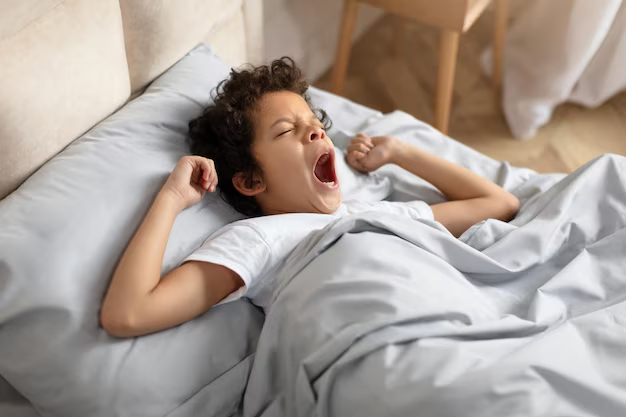Could Your Child Have Sleep Apnea? A Comprehensive Guide with Tips for Parents
As a parent, you might be attuned to every sniffle or whimper from your child during the night, but what if snoring or restless sleep is a sign of something more serious? Sleep apnea in children is more common than you might think, and understanding the symptoms and risks is crucial. So, how can you determine if your child is affected, and what can you do about it? This guide delves into everything you need to consider regarding sleep apnea in children, providing you with helpful insights and practical steps to take.
Recognizing the Signs: Does My Child Have Sleep Apnea?
Sleep apnea is a sleep disorder characterized by pauses in breathing or periods of shallow breathing during sleep. These disturbances can occur multiple times throughout the night, disrupting restful sleep and potentially leading to serious health issues.
Common Symptoms of Sleep Apnea in Children
Identifying sleep apnea in children can be challenging, as symptoms often mimic other common childhood issues. Here are some key symptoms you should watch for:
- Loud Snoring: While snoring in children might seem harmless, consistent loud snoring could indicate airway obstruction.
- Pauses in Breathing: Listen for pauses that might last a few seconds; these could be signs your child is struggling to breathe.
- Restless Sleep: If your child frequently tosses and turns, it could be due to breathing difficulties that keep them from finding a comfortable position.
- Daytime Sleepiness: Despite a full night's sleep, children with sleep apnea often appear tired during the day.
- Behavioral Problems: Irritability, hyperactivity, and difficulty concentrating can be linked to interrupted sleep.
Understanding the Causes of Sleep Apnea
It's essential to understand the root causes of sleep apnea to address it effectively. In children, some common causes include:
Enlarged Tonsils and Adenoids
One of the most prevalent causes of sleep apnea in children is the enlargement of tonsils and adenoids, which can block the airway during sleep.
Obesity
Excess weight can contribute to the development of obstructive sleep apnea, as fat deposits around the neck can interfere with breathing.
Facial Bone Structure
Some children are born with structural issues that affect the airway, such as a small jaw or palate abnormalities.
Conducting an At-Home Sleep Apnea Quiz
While consulting a healthcare professional is crucial for a definitive diagnosis, an informal at-home quiz can help you decide if further investigation is warranted. Consider these questions:
- Does your child snore loudly and consistently every night?
- Have you observed pauses in breathing during sleep?
- Does your child exhibit morning headaches upon waking?
- Is there excessive daytime sleepiness despite adequate hours of sleep?
- Does your child experience behavioral issues, such as hyperactivity or irritability?
Answering "yes" to most of these questions does not confirm sleep apnea, but it does suggest the need for a medical evaluation.
When to Seek Professional Help
If you suspect your child might have sleep apnea based on observed symptoms and informal quizzes, it's critical to seek professional advice. A pediatrician or a sleep specialist can perform evaluations such as a physical examination, medical history review, and possibly an overnight sleep study (polysomnogram).
Exploring Treatment Options
While the thought of your child having a sleep disorder may seem daunting, a range of treatment options is available:
Lifestyle Changes
For children with mild symptoms, making changes like maintaining a healthy weight and altering sleeping positions may alleviate symptoms.
Medical Interventions
- Surgical Solutions: In cases where enlarged tonsils or adenoids are the culprits, surgical removal may be recommended.
- CPAP Therapy: Continuous Positive Airway Pressure (CPAP) is a machine used in more severe cases to keep the airway open during sleep.
Monitoring and Follow-Up
Regular follow-ups with specialists are crucial for children with sleep apnea to ensure treatments are effective and adjust them as necessary.
The Link Between Sleep Apnea and Learning
Uninterrupted sleep is essential for cognitive development and learning. Children suffering from sleep apnea might experience learning difficulties due to chronic sleep deprivation. Therefore, addressing sleep apnea can be instrumental in improving school performance and social interaction.
Self-Care for Parents
Dealing with a child's health issues can be stressful. Remember to take care of your own well-being by seeking support from groups or professionals who can offer guidance and stress-release strategies.
Empowering Your Child
Empowering your child with knowledge about their condition can help alleviate anxiety. Encourage them to talk about their experiences, and even introduce fun sleep-related activities to promote healthy sleep habits.
Wrapping Up: Taking Thoughtful Steps Forward
Sleep apnea in children is a serious condition, but with the right knowledge and proactive steps, you can aid your child in achieving better sleep and improved health. By observing symptoms, conducting an informal quiz, and consulting with professionals, you’re well on your way to supporting your child's well-being.
Key Takeaways for Parents
- 🔍 Monitor Symptoms: Watch for consistent snoring, breathing pauses, and daytime sleepiness.
- 👩⚕️ Seek Professional Help: Consult with a pediatrician if you suspect sleep apnea.
- 🏥 Understand Treatments: Be familiar with lifestyle changes, medical interventions, and surgical options.
- 📚 Stay Informed: Educate yourself and your child on the importance of sleep.
- 🤝 Get Support: Balance caring for your child with self-care and seek support when needed.
Empowering yourself with knowledge and a clear course of action can help ensure your child’s healthy sleep and overall well-being.

Related Articles
- Can a Deviated Septum Cause Sleep Apnea
- Can Apple Watch Detect Sleep Apnea
- Can Losing Weight Cure Sleep Apnea
- Can Losing Weight Help Sleep Apnea
- Can Sleep Apnea Be Cured
- Can Sleep Apnea Cause Headaches
- Can Sleep Apnea Cause High Blood Pressure
- Can Sleep Apnea Cause Weight Gain
- Can You Have Sleep Apnea Without Snoring
- Do I Have Sleep Apnea